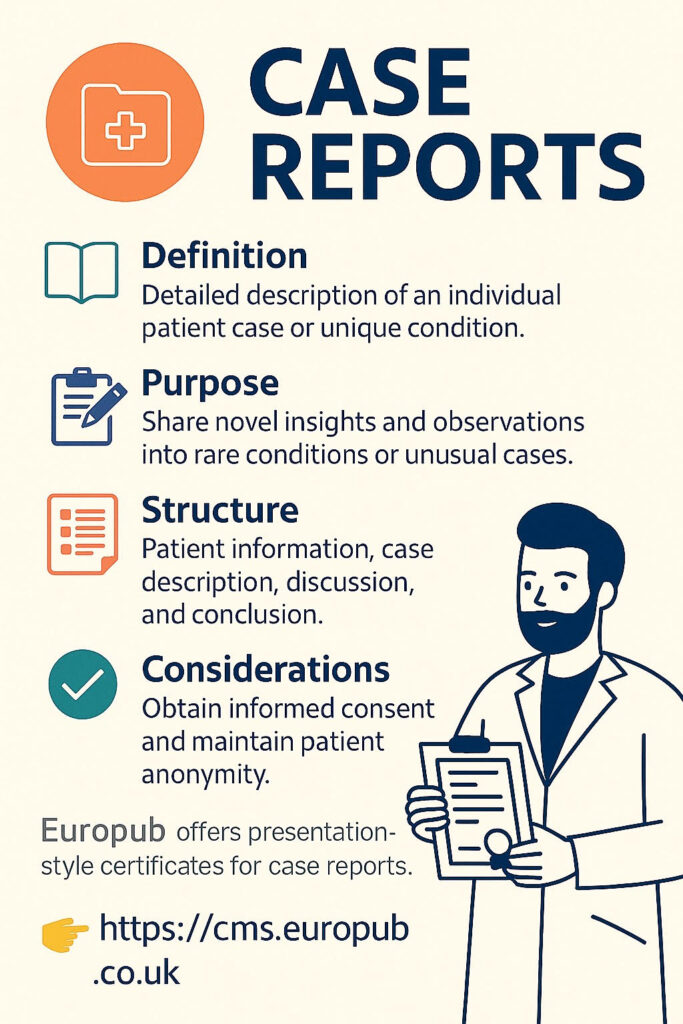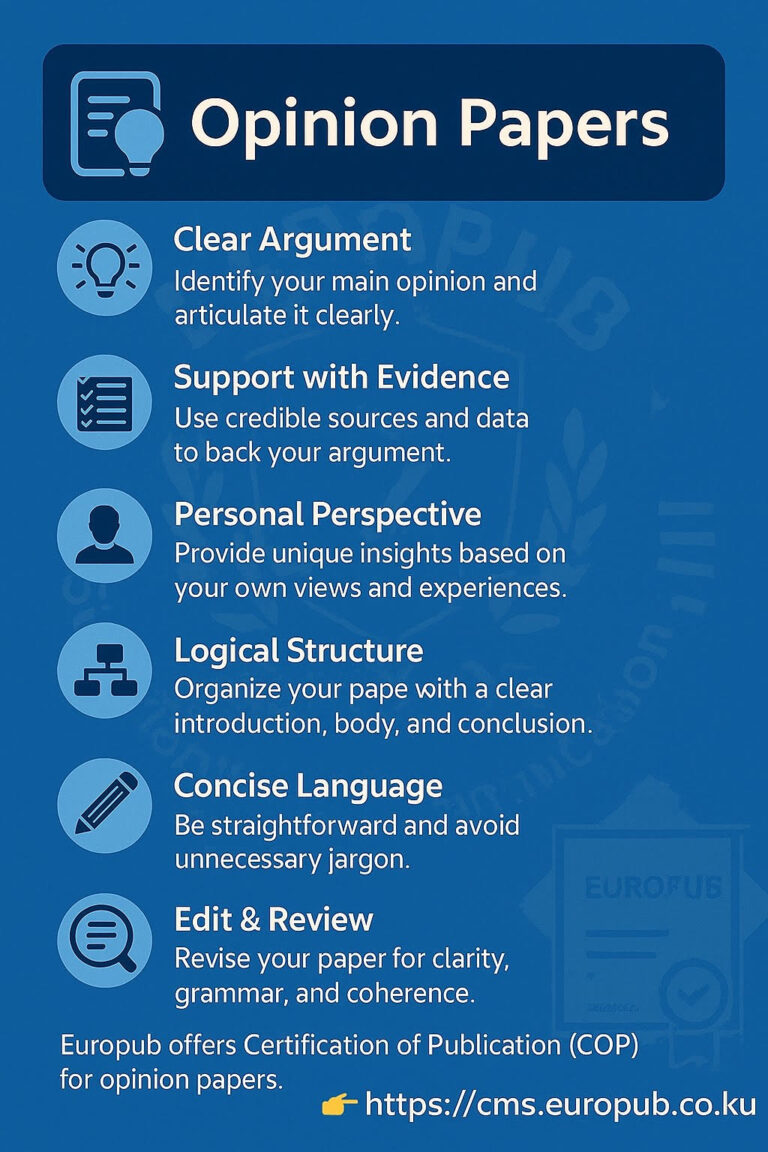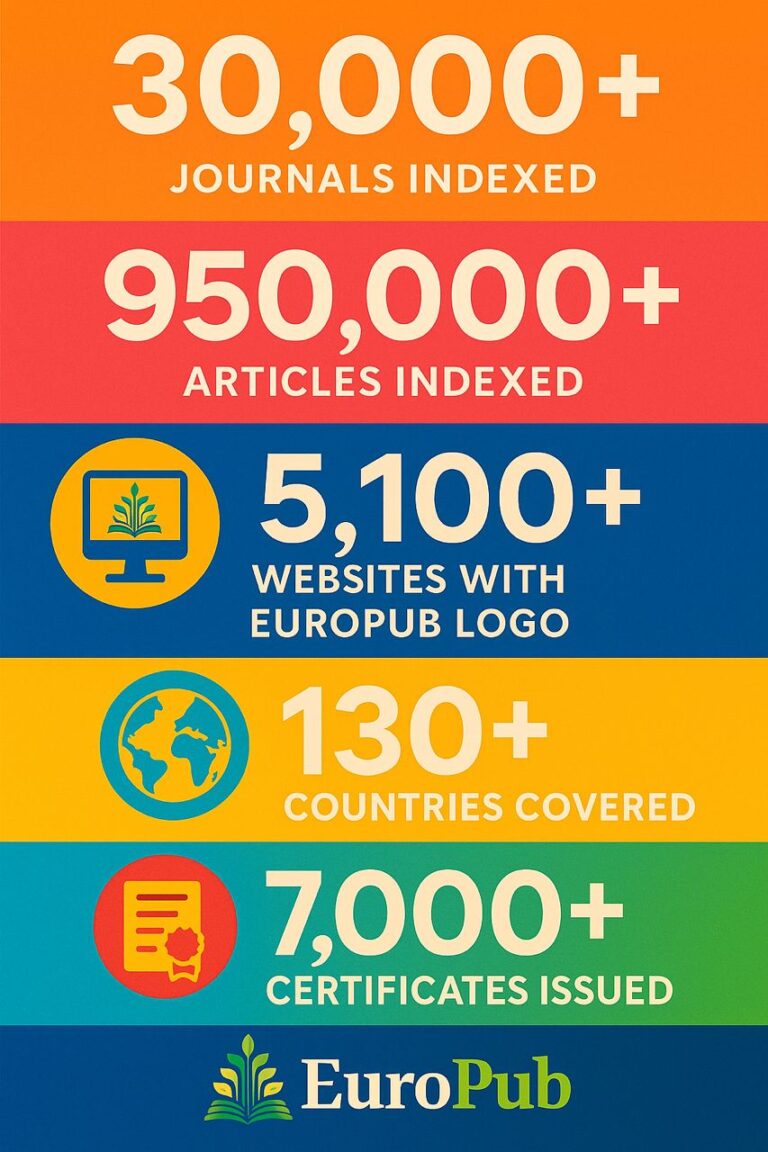
Introduction
A Case Report is a detailed account of the symptoms, diagnosis, treatment, and follow-up of an individual patient. It usually describes unusual or novel occurrences that add value to medical knowledge. Unlike large-scale studies, case reports focus on unique clinical experiences, helping doctors and researchers identify:
- Rare diseases or unusual presentations of common diseases
- Unexpected treatment responses
- Complications or side effects of therapies
- Innovative diagnostic or therapeutic approaches
Although they are considered lower in the hierarchy of evidence, case reports play a crucial role in generating hypotheses and guiding future research.
Key Characteristics of Case Reports
- Single or Small Number of Patients
- Usually 1–3 cases.
- Novelty & Educational Value
- Present unusual findings or rare medical conditions.
- Clinical Relevance
- Offer lessons for healthcare professionals.
- Detailed Documentation
- Includes history, physical examination, investigations, interventions, and outcomes.
- Ethical Standards
- Patient consent and confidentiality are essential.
Structure of Case Reports
- Title & Abstract
- Clear, descriptive, and includes keywords.
- Introduction
- Background and significance of the case.
- Case Presentation
- Patient demographics, clinical history, symptoms, diagnosis, and treatment.
- Discussion
- Comparison with existing literature, implications, and lessons learned.
- Conclusion
- Main takeaways and possible directions for further research.
- References
- Related articles and guidelines.
Importance of Case Reports
 Provide first-hand clinical insights.
Provide first-hand clinical insights.
 Highlight rare or novel medical findings.
Highlight rare or novel medical findings.
 Help generate research hypotheses.
Help generate research hypotheses.
 Offer educational value for students, practitioners, and researchers.
Offer educational value for students, practitioners, and researchers.
 May influence future clinical practices.
May influence future clinical practices.
Tools & Resources
- BMJ Case Reports
- Elsevier Journal of Case Reports
- CARE Guidelines – for standardized case report writing.
Common Mistakes
 Insufficient patient details.
Insufficient patient details.
 Lack of novelty.
Lack of novelty.
 Missing patient consent.
Missing patient consent.
 Poor structure or weak discussion.
Poor structure or weak discussion.
Europub Certification & Support
Europub offers Certificates of Case Report Publication and Peer Review Recognition Certificates through its Certificate Management System:
 QR-coded Europub Certificates validating publication.
QR-coded Europub Certificates validating publication.
 Peer review completion and participation recognition.
Peer review completion and participation recognition.
 Guidance on selecting journals for case reports.
Guidance on selecting journals for case reports.
Additional links:
 You can also contact the Europub team for expert support in preparing, reviewing, and publishing case reports.
You can also contact the Europub team for expert support in preparing, reviewing, and publishing case reports.
 Frequently Asked Questions (FAQs)
Frequently Asked Questions (FAQs)
1. What makes a case report publishable?
 Uniqueness, novelty, and relevance to clinical practice.
Uniqueness, novelty, and relevance to clinical practice.
2. Do case reports require ethical approval?
 Not always, but patient consent is mandatory.
Not always, but patient consent is mandatory.
3. How long is a typical case report?
 Usually 1,000–2,500 words, depending on the journal.
Usually 1,000–2,500 words, depending on the journal.
4. Are case reports peer-reviewed?
 Yes. Most journals subject case reports to peer review.
Yes. Most journals subject case reports to peer review.
5. Are case reports valuable for early-career researchers?
 Absolutely. They are a good entry point for publishing.
Absolutely. They are a good entry point for publishing.
6. Can case reports be indexed in PubMed or Scopus?
 Yes, if published in indexed journals.
Yes, if published in indexed journals.
7. What is the CARE guideline?
 A standardized framework for writing high-quality case reports.
A standardized framework for writing high-quality case reports.
8. Why are case reports important if they are low-level evidence?
 Because they highlight unique phenomena that can later inspire larger studies.
Because they highlight unique phenomena that can later inspire larger studies.
9. Can case reports be co-authored?
 Yes. Many case reports are written by teams including clinicians, residents, and students.
Yes. Many case reports are written by teams including clinicians, residents, and students.
Conclusion
Case Reports are essential contributions to medical and scientific literature. While they may not rank high in evidence hierarchy, they often mark the first recognition of new diseases, syndromes, or treatment effects. Europub supports researchers and clinicians by offering official certifications, expert guidance, and global recognition for their case report publications.






